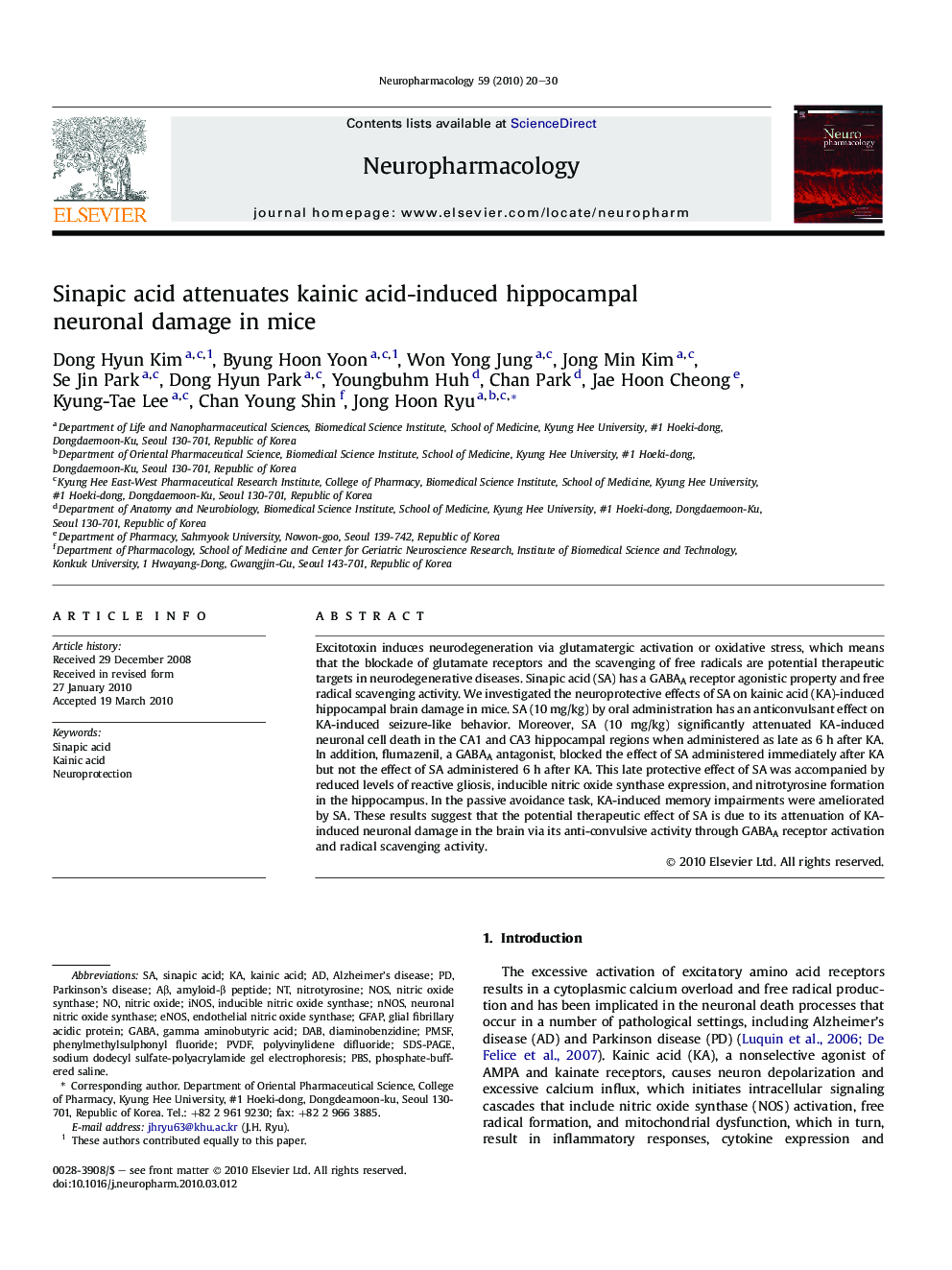| Article ID | Journal | Published Year | Pages | File Type |
|---|---|---|---|---|
| 2494140 | Neuropharmacology | 2010 | 11 Pages |
Excitotoxin induces neurodegeneration via glutamatergic activation or oxidative stress, which means that the blockade of glutamate receptors and the scavenging of free radicals are potential therapeutic targets in neurodegenerative diseases. Sinapic acid (SA) has a GABAA receptor agonistic property and free radical scavenging activity. We investigated the neuroprotective effects of SA on kainic acid (KA)-induced hippocampal brain damage in mice. SA (10 mg/kg) by oral administration has an anticonvulsant effect on KA-induced seizure-like behavior. Moreover, SA (10 mg/kg) significantly attenuated KA-induced neuronal cell death in the CA1 and CA3 hippocampal regions when administered as late as 6 h after KA. In addition, flumazenil, a GABAA antagonist, blocked the effect of SA administered immediately after KA but not the effect of SA administered 6 h after KA. This late protective effect of SA was accompanied by reduced levels of reactive gliosis, inducible nitric oxide synthase expression, and nitrotyrosine formation in the hippocampus. In the passive avoidance task, KA-induced memory impairments were ameliorated by SA. These results suggest that the potential therapeutic effect of SA is due to its attenuation of KA-induced neuronal damage in the brain via its anti-convulsive activity through GABAA receptor activation and radical scavenging activity.
